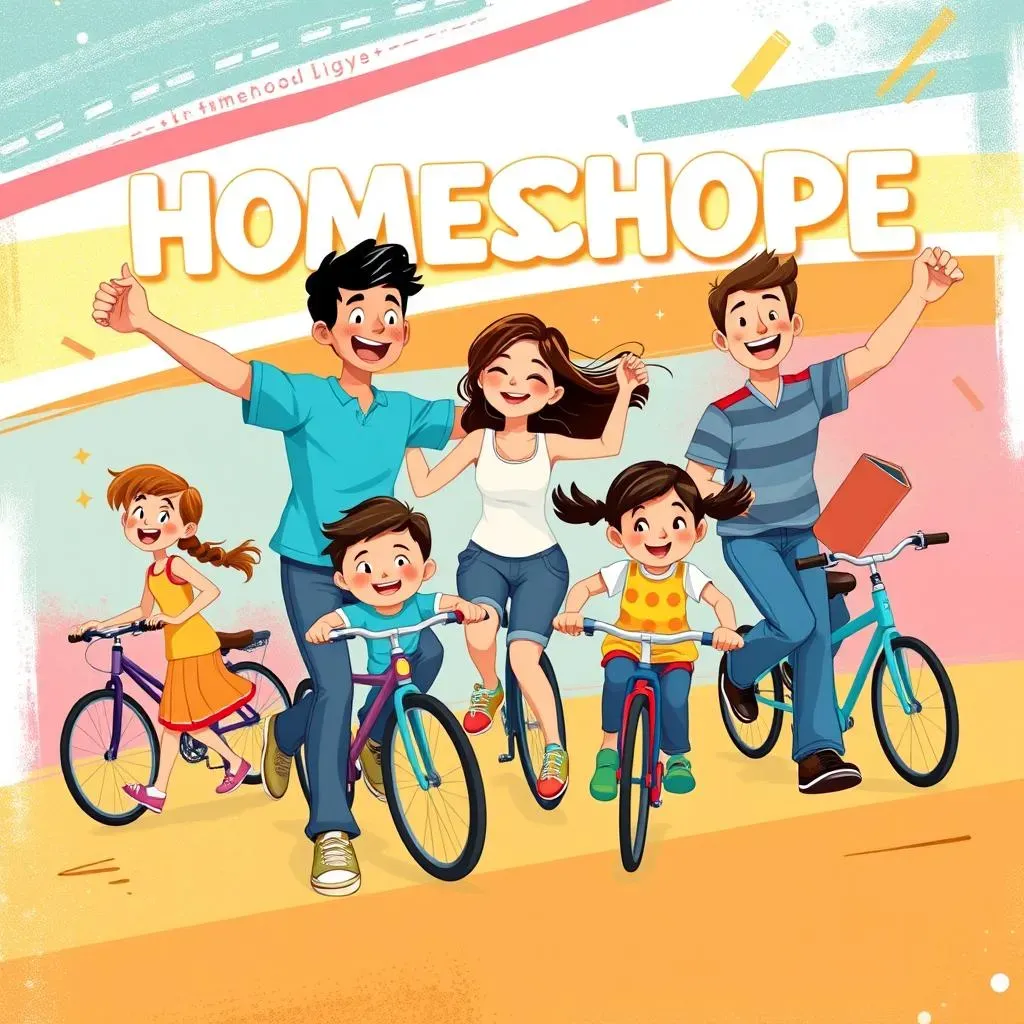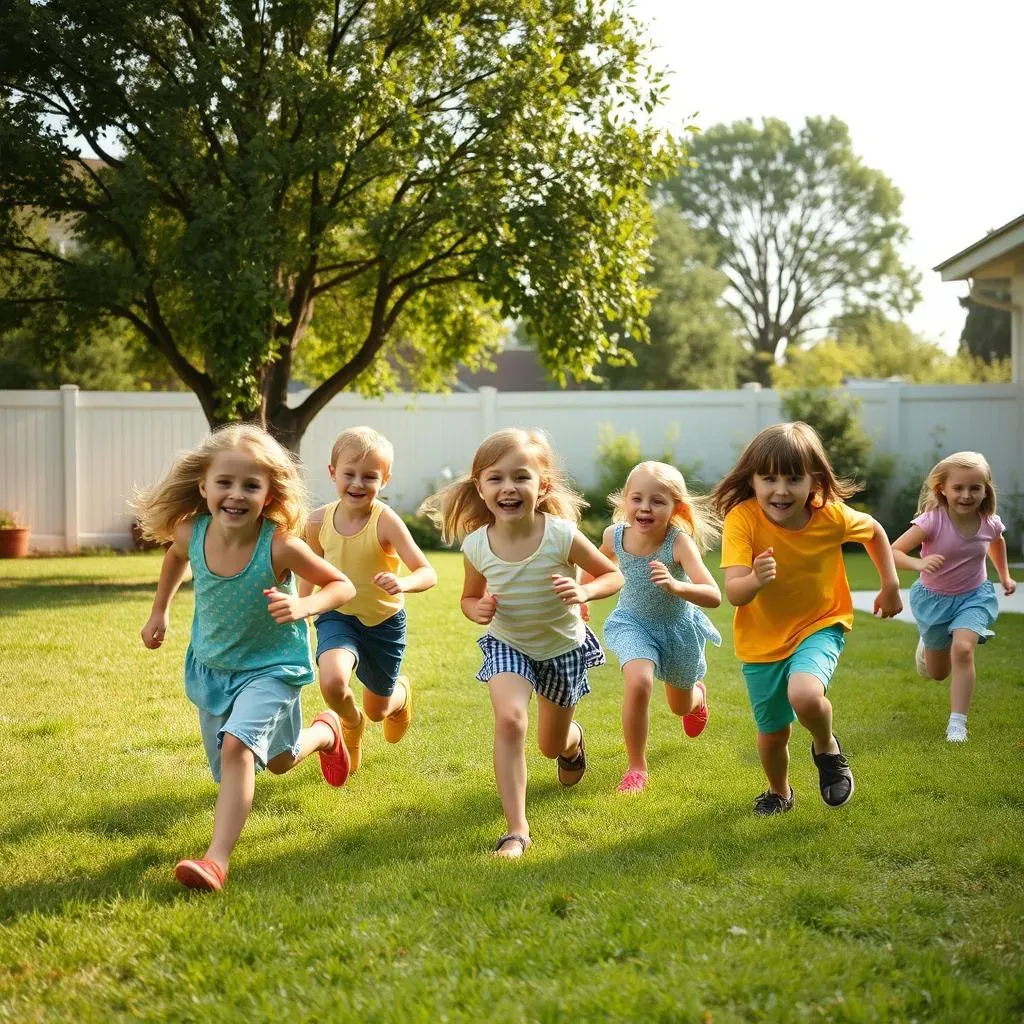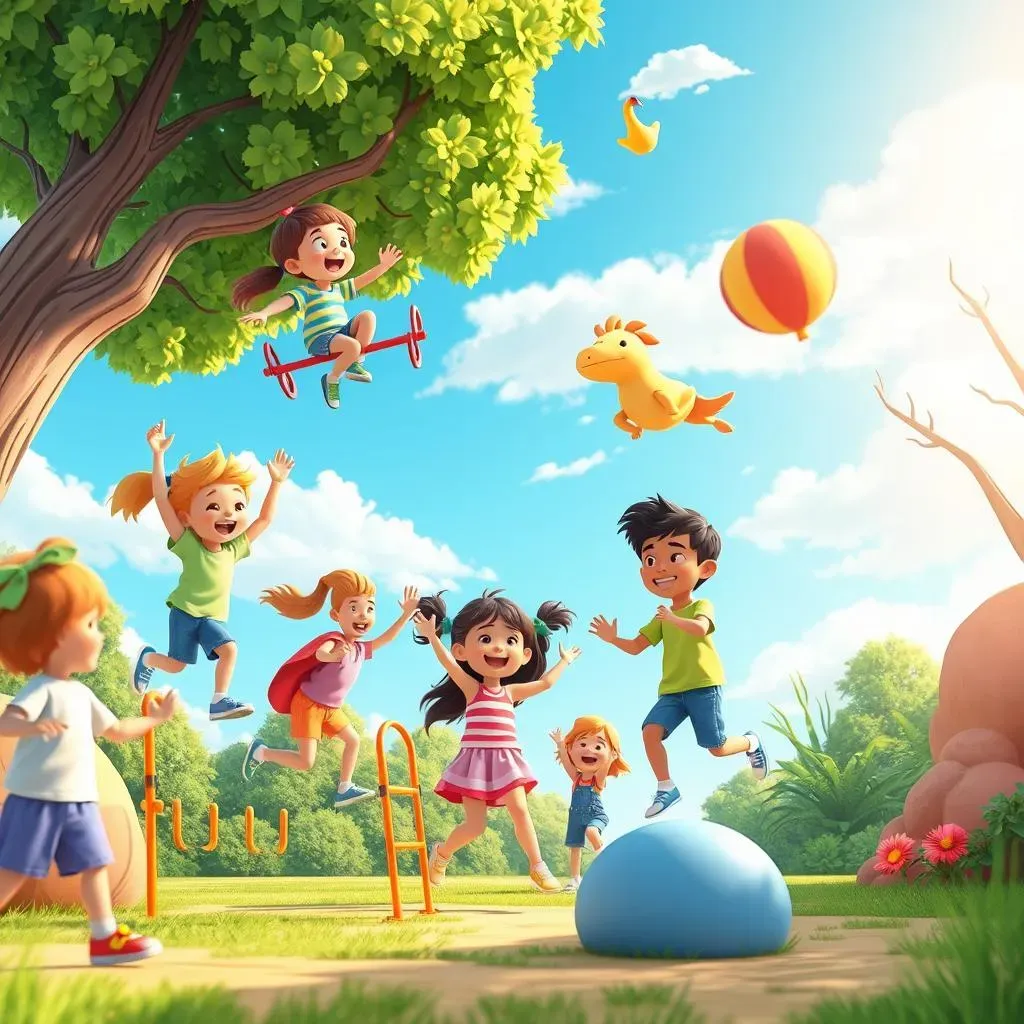Table of Contents
Homeschooling offers incredible flexibility, but crafting a well-rounded education can feel overwhelming. Physical education often gets overlooked, but it's crucial for kids' health and development. This article is your guide to creating a fantastic homeschool PE curriculum that’s both effective and enjoyable. We'll explore the numerous benefits of incorporating regular physical activity into your homeschool routine, going beyond the simple idea of "just playing outside." Then, we'll walk you through building your own homeschool PE curriculum, whether you prefer a structured approach or a more flexible, activity-based plan. We'll offer tons of creative ideas to keep your kids active and engaged, ensuring that PE becomes a highlight of their homeschool day, not a dreaded chore. Get ready to ditch the boredom and embrace a fun, active learning experience that will benefit your children for years to come! Let's dive into the world of homeschool PE and discover how to make it work for your family. This guide will help you navigate the essentials of a successful homeschool PE curriculum.
Why Homeschool PE Matters: Benefits Beyond the Textbook
Why Homeschool PE Matters: Benefits Beyond the Textbook
Look, we all know academics are important. But a healthy body fuels a healthy mind! Homeschool PE isn't just about burning energy; it's about building crucial life skills. We're talking coordination, balance, and strength – things that translate directly into better focus and classroom performance. Plus, regular physical activity combats childhood obesity and promotes better sleep, which, let's be honest, every parent craves. Think of it like this: a well-rounded homeschool education isn't just about books and tests; it's about fostering a lifelong love of learning and a healthy lifestyle. And that starts with movement! A strong PE program can even improve self-esteem and social skills, especially if you incorporate team activities or games. Need ideas for a great homeschool curriculum? Check out this guide on finding the best homeschool curriculum.
Benefit | Impact on Learning |
|---|---|
Improved Coordination & Balance | Better handwriting, focus, and classroom participation |
Increased Strength & Endurance | More energy for learning, less fatigue |
Reduced Stress & Anxiety | Improved mood, better concentration |
Beyond the physical benefits, think about the social-emotional growth. Team sports teach cooperation and sportsmanship. Individual activities like yoga or dance build self-confidence and body awareness. It’s all interconnected! Want to learn more about creating your own curriculum? Our guide on creating your own homeschool curriculum is a great resource. And remember, it doesn't have to be expensive! Many free resources are available online. You can even adapt activities from your child's favorite games or shows. The key is to make it fun and engaging, keeping your child active and excited about learning.
- Improved physical health
- Enhanced cognitive function
- Increased self-esteem
- Better sleep
- Stronger social skills
Don't underestimate the power of a simple walk in the park, a game of tag in the backyard, or even a family dance party! These seemingly small activities can have a huge impact on your child's overall well-being. For more ideas on how to create a fun and engaging PE program, see our comprehensive guide on homeschool curriculum resources. Remember, the goal isn't to create Olympic athletes, but to instill a lifelong love of movement and healthy habits.
Building Your Homeschool PE Curriculum: From Simple to Structured
Building Your Homeschool PE Curriculum: From Simple to Structured
Starting Simple: The "Play-Based" Approach
Let's face it, sometimes less is more. For younger kids, or families with busy schedules, a play-based approach can be fantastic. Think unstructured playtime, exploring local parks, bike rides, and backyard games. The emphasis here is on fun and movement, not rigid schedules or structured lessons. This approach allows kids to explore their physical abilities naturally and discover activities they enjoy. Don't underestimate the power of simple games like tag, hide-and-seek, or hopscotch – they're fantastic for building coordination and social skills. Need more ideas for simple activities? Check out this guide on homeschool curriculum for pre-k.
- Unstructured playtime
- Nature walks and hikes
- Bike rides and scooter adventures
- Backyard games (tag, hopscotch, etc.)
- Family dance parties!
Adding Structure: Thematic Units and Weekly Plans
As your child gets older, or if you prefer a more structured approach, you can incorporate thematic units or weekly plans. This might involve focusing on a specific skill each week, like balance, strength, or flexibility. You could create a simple schedule, allocating specific days for different activities. For example, Mondays could be for yoga or stretching, Wednesdays for team sports, and Fridays for free play. Remember to make it fun! Incorporate your child's interests into the activities. If they love animals, try incorporating animal-themed exercises. If they love superheroes, create a superhero training course in the backyard. Need help choosing the right resources? Our guide on choosing the right homeschool curriculum is a great place to start.
Day | Activity |
|---|---|
Monday | Yoga/Stretching |
Tuesday | Cardio (running, jumping jacks) |
Wednesday | Team Sports (basketball, soccer) |
Thursday | Strength Training (bodyweight exercises) |
Friday | Free Play/Outdoor Adventure |
Utilizing Online Resources and Pre-Made Curricula
Don't reinvent the wheel! Numerous online resources and pre-made curricula can supplement your homeschool PE program. Websites and YouTube channels offer tons of kid-friendly exercise videos, dance classes, and fitness challenges. Some even offer structured lesson plans and printable worksheets. Remember to carefully evaluate any resource before implementing it, ensuring it's age-appropriate and aligns with your child's abilities and interests. Consider factors like cost, time commitment, and the overall quality of the program. Check out our post on homeschool video curriculum for some additional ideas. Ultimately, the best homeschool PE curriculum is the one that works best for your family, keeping your kids active, engaged, and having fun!
- Online workout videos
- Dance classes (YouTube, online studios)
- Fitness apps for kids
- Printable PE worksheets and lesson plans
- Pre-made homeschool PE curricula
Creative PE Activities: Keeping Kids Active and Engaged
Creative PE Activities: Keeping Kids Active and Engaged
Obstacle Courses: Fun for All Ages
Obstacle courses are a fantastic way to get kids moving and thinking creatively. You can build one in your backyard using household items like pillows, blankets, chairs, and toys. For older kids, incorporate more challenging elements like jumping jacks, burpees, or even a short sprint. Make it a competition or a timed challenge to add an extra layer of excitement. Remember to adjust the difficulty based on your child's age and abilities. The goal is to have fun and get creative!
Don't be afraid to get silly! Use hula hoops, jump ropes, cones, or anything else you can find around the house. The more creative you get, the more fun your kids will have. You can even create themed obstacle courses, like a jungle adventure or a superhero training course. Need some extra inspiration? Check out this guide on free homeschool curriculum resources.
- Pillows and blankets
- Chairs and tables
- Toys and balls
- Jump ropes and hula hoops
- Cones and markers
Dance and Movement: Expressing Through Exercise
Dance is a fantastic way to get kids moving and having fun. Put on some music and let loose! You can explore different styles, from hip-hop to ballet to salsa. There are tons of kid-friendly dance videos available online, making it easy to find something that suits your child's interests. Dancing is not only fun but also improves coordination, rhythm, and creativity. It’s a great way to combine physical activity with artistic expression.
Consider incorporating different types of movement into your dance sessions. Try incorporating elements of yoga or Pilates for flexibility and strength. You can even create your own dance routines based on stories or themes. Let your child take the lead and create their own choreography! For more ideas on incorporating movement into your homeschool routine, check out our guide on homeschool video curriculum.
Dance Style | Benefits |
|---|---|
Ballet | Grace, posture, flexibility |
Hip-hop | Rhythm, coordination, energy |
Salsa | Coordination, rhythm, partner work |
Outdoor Adventures: Nature's Playground
Get outside! Nature offers endless opportunities for physical activity and exploration. Hikes, bike rides, swimming, and even simply playing in the park are all fantastic ways to get kids moving. Outdoor activities not only improve physical health but also enhance creativity, problem-solving skills, and appreciation for the environment. It’s a win-win!
Explore local parks, nature trails, and beaches. Organize scavenger hunts, nature walks, or even a family camping trip. The possibilities are endless! Remember to prioritize safety and always supervise your children during outdoor activities. For more ideas on creating a fun and engaging learning experience, explore our guide on choosing the right homeschool curriculum.
- Hiking and nature walks
- Bike rides and scooter adventures
- Swimming and water activities
- Picnics and outdoor games
- Camping and outdoor exploration